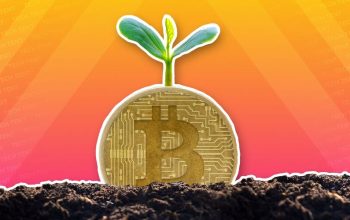Bitcoin mining is the process by which new Bitcoin is created and transactions are verified on the Bitcoin network. Mining involves solving complex mathematical problems using specialized hardware and software. In this article, we’ll take a closer look at how to mine Bitcoin, including the equipment needed, the process of setting up a mining operation, and the potential rewards and risks involved.
How Bitcoin Mining Works?
Bitcoin mining is an important aspect of the Bitcoin ecosystem. When a new Bitcoin transaction is made, it needs to be verified by the Bitcoin network. Miners use specialized hardware and software to verify these transactions and add them to the Bitcoin blockchain.
To mine Bitcoin, miners use a process called proof-of-work, which involves solving complex mathematical problems using specialized computer hardware. The first miner to solve the problem and add a new block of transactions to the blockchain is rewarded with newly minted Bitcoin.
Equipment Needed for Bitcoin Mining
To mine Bitcoin, you’ll need specialized hardware and software. Here’s what you’ll need to get started:
- ASIC Miner: An ASIC (Application-Specific Integrated Circuit) miner is a specialized computer chip designed specifically for Bitcoin mining. These chips are much more efficient at solving the complex mathematical problems required for mining Bitcoin than traditional computer hardware.
- Power Supply: You’ll need a power supply to run your ASIC miner. Make sure to choose a power supply that’s compatible with your specific model of miner.
- Cooling System: Bitcoin mining can generate a lot of heat, so you’ll need a cooling system to keep your equipment from overheating.
- Internet Connection: You’ll need a reliable internet connection to connect to the Bitcoin network and receive the latest blocks of transactions.
Setting Up a Bitcoin Mining Operation
Once you have your equipment, it’s time to set up your mining operation. Here are the steps to follow:
- Choose a Mining Pool: To increase your chances of earning Bitcoin, consider joining a mining pool. A mining pool is a group of miners who combine their resources to mine Bitcoin together.
- Install Mining Software: You’ll need to install mining software on your computer to run your ASIC miner. Popular mining software options include CGminer and BFGminer.
- Configure Your Mining Software: Once you’ve installed your mining software, you’ll need to configure it to connect to your mining pool and start mining.
- Monitor Your Mining Operation: Keep an eye on your mining operation to ensure that everything is running smoothly. Monitor your hardware temperatures and keep an eye on your mining pool’s statistics to track your earnings.
Rewards and Risks of Bitcoin Mining
Bitcoin mining can be a potentially profitable venture, but it also comes with risks. The potential rewards of Bitcoin mining include earning newly minted Bitcoin and transaction fees. However, mining can also be expensive due to the high cost of specialized hardware and electricity.
Additionally, Bitcoin mining has become increasingly competitive in recent years, making it more difficult to earn a profit. It’s also important to consider the environmental impact of Bitcoin mining, as it requires a significant amount of energy to power the specialized hardware used for mining.
Choosing a Mining Pool
As mentioned earlier, joining a mining pool can increase your chances of earning Bitcoin. When choosing a mining pool, consider factors such as the pool’s fee structure, payout frequency, and reputation.
Additionally, consider the pool’s size and location. Larger pools may offer more consistent earnings, but they also have more competition. Pools located in areas with low electricity costs may offer a cost advantage for mining.
Calculating Profitability
Calculating the potential profitability of Bitcoin mining can be complex, as it depends on factors such as the cost of electricity, the price of Bitcoin, and the difficulty of mining. There are online calculators available that can help you estimate your potential earnings and expenses.
It’s important to note that Bitcoin mining profitability can fluctuate significantly over time, so it’s important to keep track of your expenses and adjust your mining strategy accordingly.
Mining Alternatives
While Bitcoin mining is the most well-known form of cryptocurrency mining, there are many other cryptocurrencies that can be mined using similar hardware and software. Some popular alternatives to Bitcoin mining include Ethereum, Litecoin, and Monero.
Risks of Bitcoin Mining
In addition to the risks associated with the cost of equipment and electricity, Bitcoin mining also carries the risk of hacking and theft. If a hacker gains access to your mining operation, they could potentially steal your Bitcoin earnings or even your mining equipment.
Additionally, the environmental impact of Bitcoin mining is a growing concern. As the demand for Bitcoin mining increases, so does the amount of energy needed to power the specialized hardware used for mining.
Cloud Mining
Cloud mining is a type of Bitcoin mining that involves renting computing power from a third-party provider. This can be a convenient option for those who don’t want to invest in specialized hardware and software, but it also comes with its own set of risks and drawbacks.
When considering cloud mining, it’s important to research the provider and their reputation. Additionally, consider the provider’s fees and payout structure, as well as their terms of service.
Bitcoin Mining Regulations
Bitcoin mining is a legal activity in most countries, but it’s important to be aware of the regulations in your area. Some countries have strict regulations regarding cryptocurrency mining, while others have encouraged its growth as a way to attract investment.
It’s important to comply with all relevant laws and regulations when setting up a mining operation. This may include obtaining any necessary licenses or permits and paying taxes on your earnings.
Mining Software
In addition to choosing the right hardware for Bitcoin mining, it’s also important to choose the right software. Mining software is used to connect your hardware to the Bitcoin network and manage the mining process.
Some of the most popular mining software options include BFGminer, CGminer, and EasyMiner. Each software option has its own unique features and advantages, so it’s important to research and compare different options before choosing the right one for your mining operation.
Mining Pools vs. Solo Mining
While joining a mining pool can increase your chances of earning Bitcoin, solo mining is another option to consider. Solo mining involves using your own hardware and software to mine Bitcoin without the help of a pool.
While solo mining can be more difficult and less profitable than joining a pool, it also offers the potential for higher earnings and more control over the mining process.
Conclusion
Bitcoin mining can be a potentially profitable venture, but it also requires significant investment in specialized hardware and software. When setting up a mining operation, it’s important to choose the right equipment, join a mining pool, and monitor your earnings and expenses.
However, it’s also important to be aware of the potential risks and environmental impact of Bitcoin mining. If you’re interested in Bitcoin mining, make sure to do your research and consider all the factors involved before investing.
Pranav is a tech, crypto & blockchain writer based in London. He has been following the development of blockchain technology for several years.




